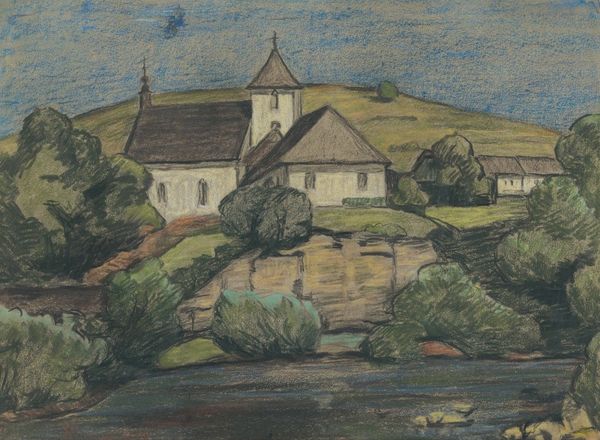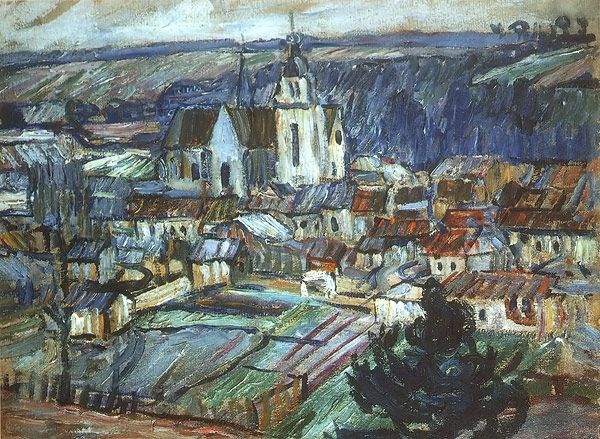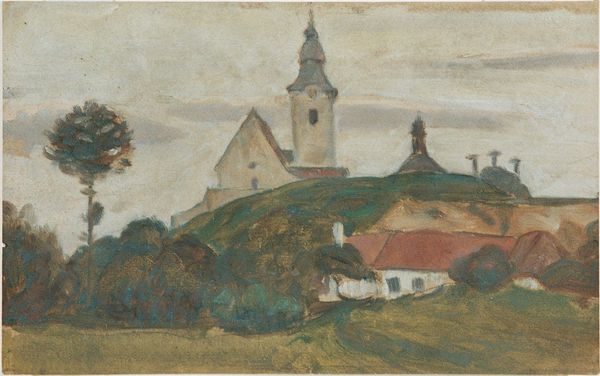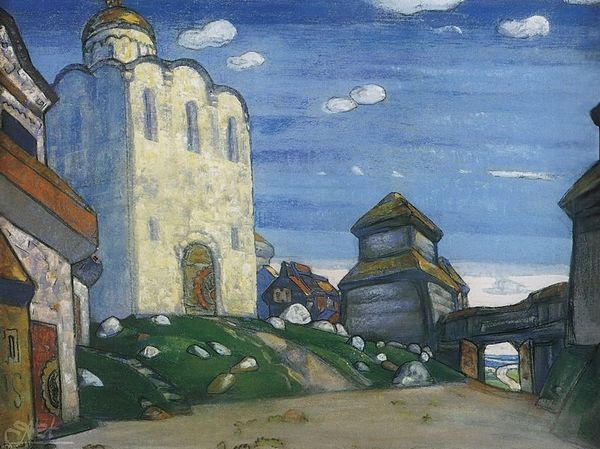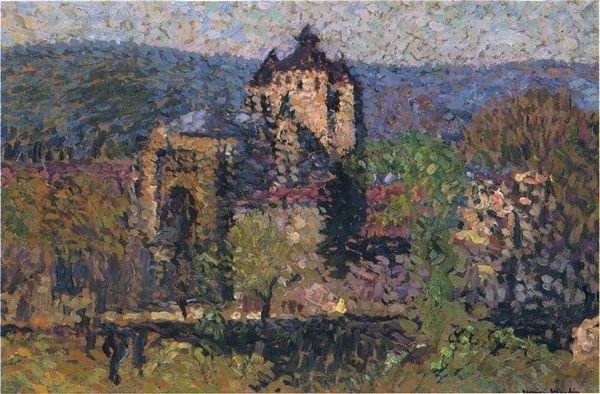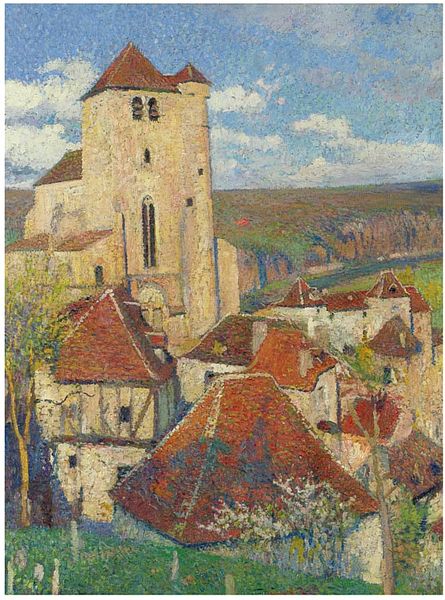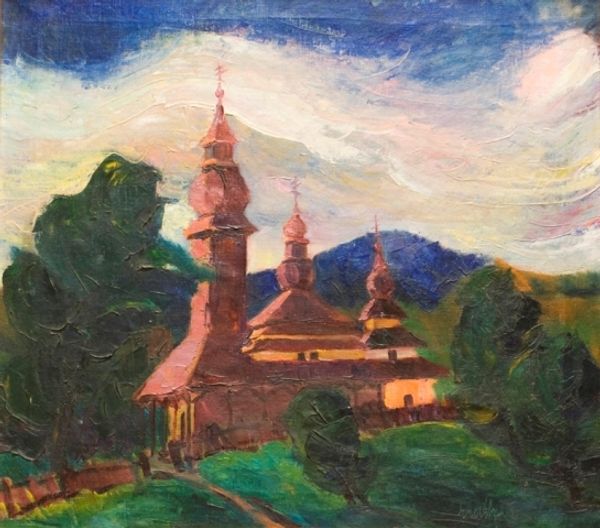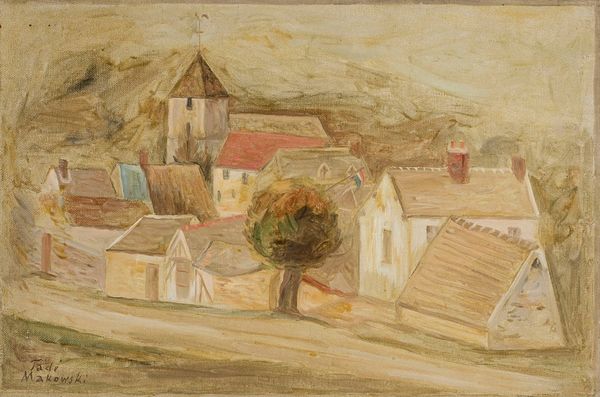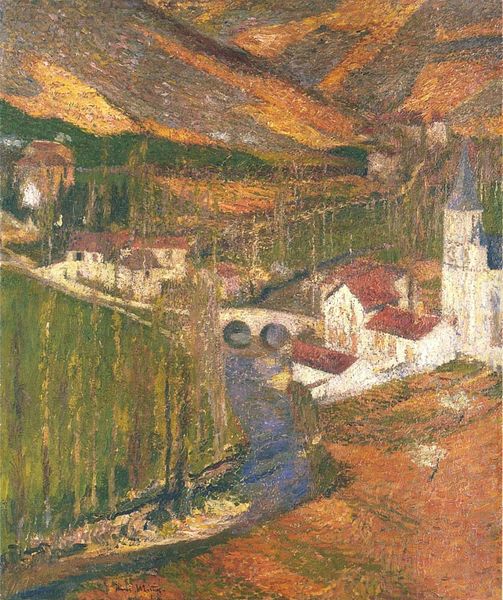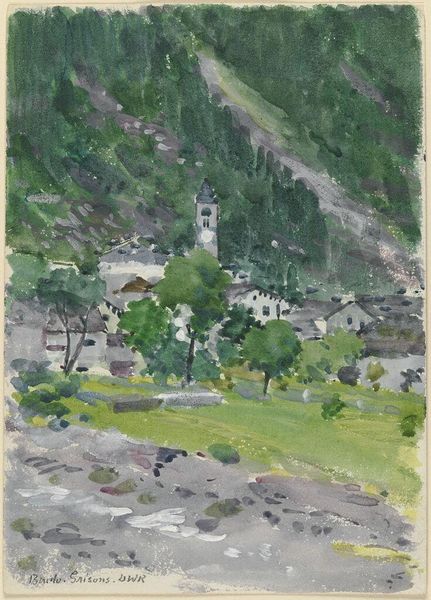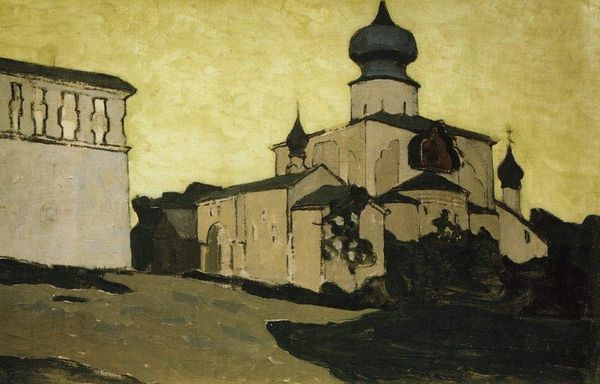
Copyright: Adalbert Erdeli,Fair Use
Curator: Today, we're looking at "Castle. Slovakia.Red Hill" by Adalbert Erdeli, painted around 1930. It's an oil on canvas landscape, showcasing a prominent castle perched atop a hill. Editor: My initial impression is one of romantic isolation. The palette is muted yet optimistic, the scene serene and stately despite its potential vulnerability in the landscape. Curator: Absolutely. Erdeli employs impressionistic brushstrokes that soften the structure's inherent geometry and formality. Notice the way light plays across the facade, dematerializing the imposing architecture. It transforms the stronghold into something less absolute, softening boundaries between nature and man-made. Editor: But the siting of the castle, dominating the reddish hill, cannot be ignored. In Slovakia during the interwar years, anxieties of nationalism, sovereignty, and ethnic identity were palpable. I can’t help but think about who was allowed inside those walls, and whose labor made such structures possible. The picturesque should not distract us from understanding structures of control. Curator: Your point regarding context is certainly valid. Yet from a formalist lens, consider how Erdeli simplifies and abstracts forms. There’s a distinct movement toward abstraction; he isn't replicating reality, but conveying an experience of place through color and form. Observe the sky; the pink and blue hues seem to exist separately from the structure, offering both dimension and visual complexity. Editor: Yes, the tension between the solidity of the castle and that ephemeral sky generates dynamism and illustrates how history—represented by this architecture—is not immutable. This landscape may have been deeply symbolic for its viewers as various empires disintegrated, reformed, and destabilized in rapid succession. Curator: Perhaps the tension mirrors Erdeli’s own position; he straddled multiple art worlds. His training incorporated academic realism, symbolism, and impressionism, all synthesized uniquely in his rendering. Editor: Right, a powerful reminder that artworks, seemingly simple, echo within much larger conversations about power, perception, and lived realities. Curator: Indeed. Examining its construction alongside its historical context gives a far richer reading. Editor: It invites reflection on both our aesthetic enjoyment and political responsibilities as viewers.
Comments
No comments
Be the first to comment and join the conversation on the ultimate creative platform.
